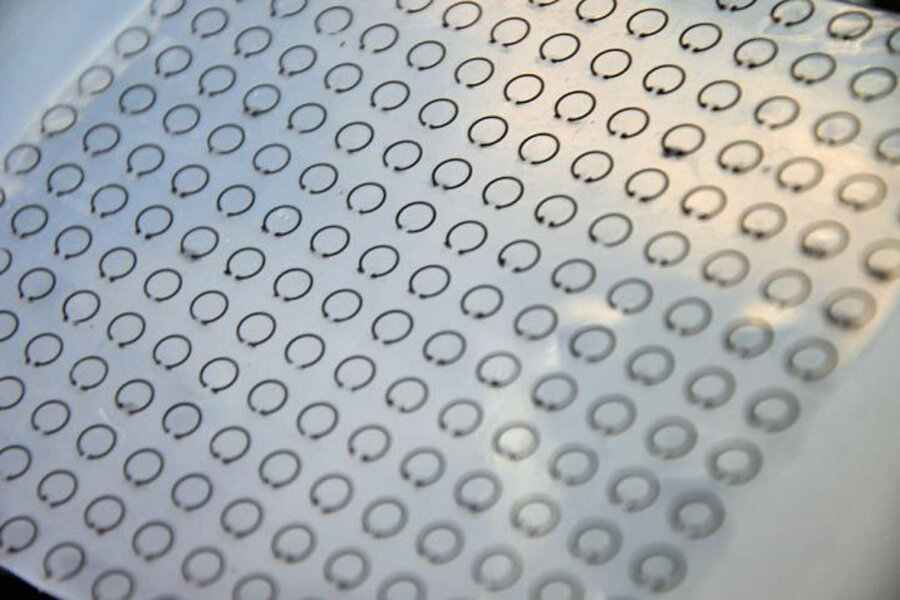Researchers develop stretchy, radar-cloaking skin
Loading...
Engineers at Iowa State University have developed a skin that can cloak objects – like airplanes – from detection by radar.
This stretchable and wearable meta-skin, or metamaterial-based skin, made by embedding an array of liquid metal split-ring resonators into a highly stretchable rubber, can manipulate electromagnetic waves, say the researchers.
The resonators are laid out in rows, each ring with a radius of a tenth of an inch and a thickness of half a millimeter, and filled with the liquid metal galinstan, an alloy that’s liquid at room temperature and less toxic than other liquid metals, such as mercury. Between the rings is a 1-millimeter gap, which creates a small, curved segment of liquid wire.
The rings create electric inductors, and the gaps create electric capacitors, explain the researchers in a paper published online on February 23 in the open-access journal Scientific Reports. Combined, this makes for a resonator that can trap and suppress radar waves of a particular frequency. When the skin is wrapped around something and stretched, it changes the size of the liquid metal rings inside and thus the frequency of radar waves.
The paper authors, electrical and computer engineers, say their tests showed the skins suppressed about 75 percent of radar waves in all directions, in the frequency of of 8 to 10 gigahertz.
“Therefore, this meta-skin technology is different from traditional stealth technologies that often only reduce the backscattering, i.e., the power reflected back to a probing radar,” the engineers said in an announcement.
The material could be used in military applications, say the researchers, where it could potentially cloak objects, such as B-52 bombers, from radar detection. But it also could be applied to visible or infrared light to create optical cloaking devices too, though this would be harder to achieve as it would require advanced nanomanufacturing technologies.







